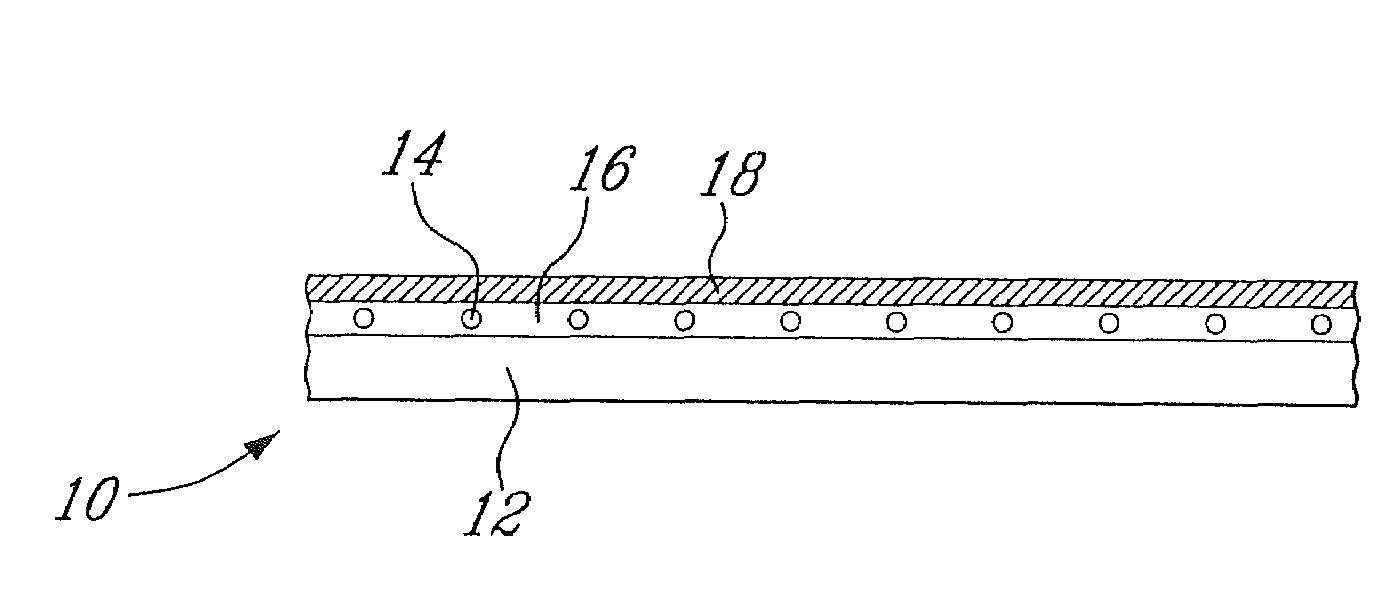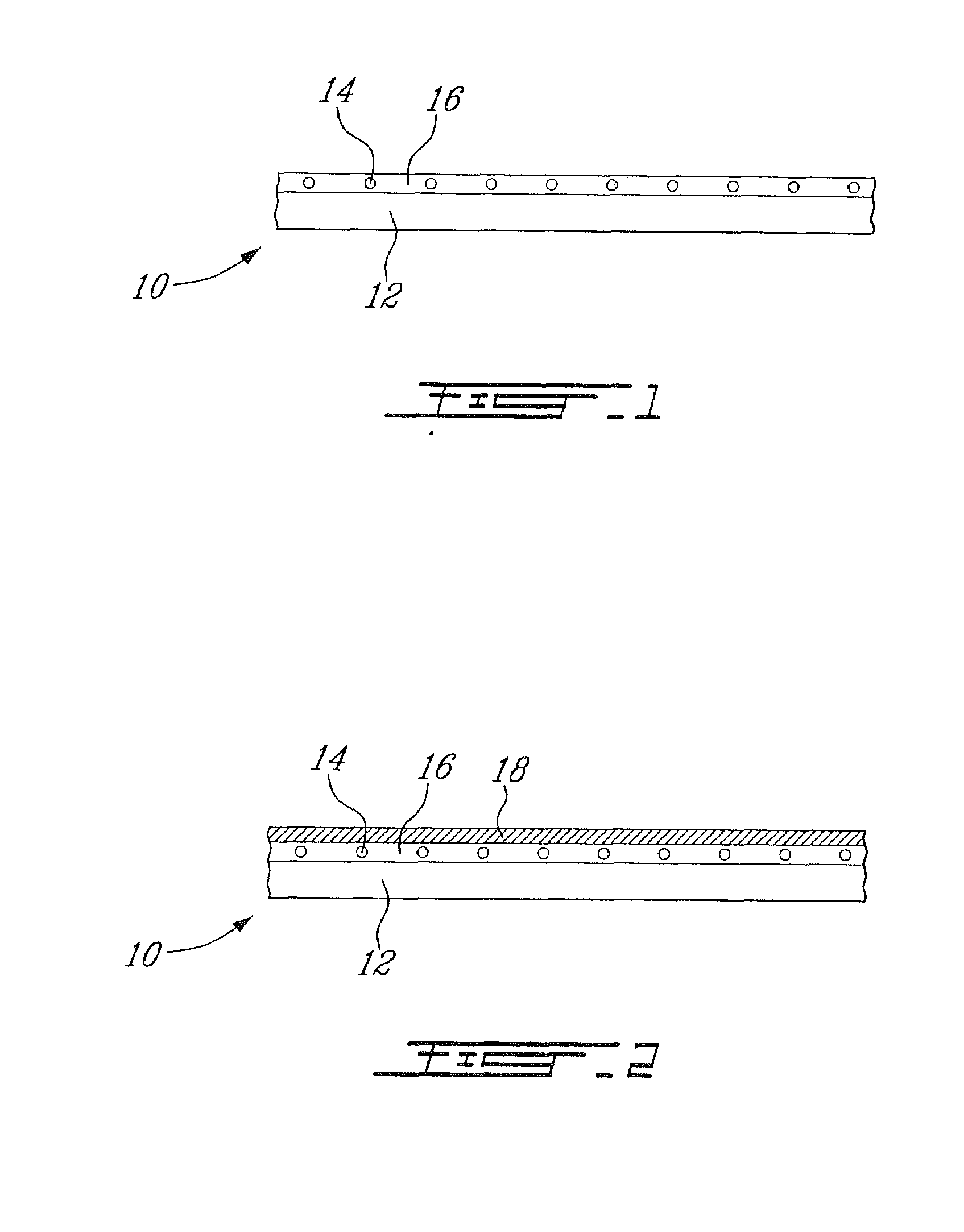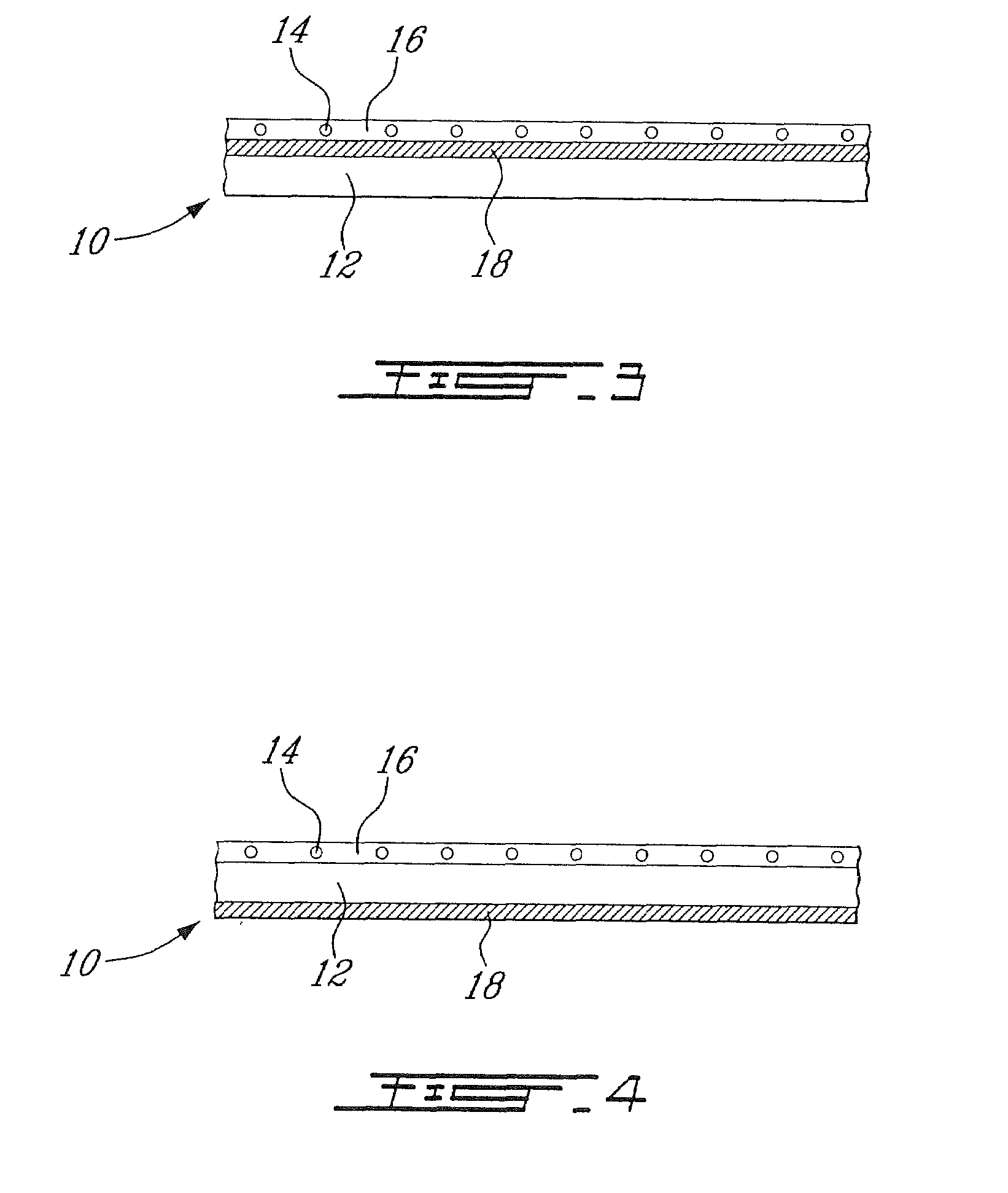New antimicrobial material
a technology of antimicrobial material and antimicrobial coating, which is applied in the direction of biocide, plant growth regulator, weaving, etc., can solve the problems of high inhibition zone, material improper for medical or high-tech applications, and limited antimicrobial activity of dressings, so as to reduce the surface energy of colloidal solution, improve surface distribution, and improve the effect of silver salt application uniformity
- Summary
- Abstract
- Description
- Claims
- Application Information
AI Technical Summary
Benefits of technology
Problems solved by technology
Method used
Image
Examples
example 1
[0104]A knitted polyester / carbon fabric (90 / 10) is passed through a bath containing a silver nitrate solution 0.2 M and then in a second bath containing a vinyl acetate emulsion into which dissolved sodium chloride is in excess 0.25 M which allows the formation of silver chloride colloid of a size range of 10-1000 nm. The silver chloride colloid dispersed into the vinyl acetate emulsion is subsequently squeezed inside the fabric using rubber laminated rolls before being dried on a finishing line to the temperature of 150° C. at a speed of 0.3 metre / minute. An electrically conductive, crocking resistant, antimicrobial fabric possessing antibacterial properties against gram negative and gram positive bacteria is obtained.
Surface resistivity, Ohm / square: <1
Crocking dry, 5-1: 4-5
Crocking humid, 5-1:4
Inhibition, S. Aureus (presence or absence): presence
Inhibition, P. Aeruginosa (presence or absence): presence
Inhibition, E. Faecium (presence or absence): presence
Inhibition Zone, S. Aureus...
example 2
[0106]A knitted polyester / carbon fabric (90 / 10) is passed through a bath containing a silver nitrate solution 0.2 M and then in a second bath containing a solvent mix prepared in equal parts of water and ethanol
[0107](50:50% / vol) into which is dissolved sodium chloride is in excess 0.25 M which allows the formation of silver chloride colloid of a size range of 10-1000 nm. Also to this second bath is added a chlorinated organic compound, in the occurrence an organic compound known as Triclosan®. Chlorinated organic, non-leaching, antimicrobials agents of this type may be chosen from the group consisting of 2,4,4′-trichloro-2′-hydroxy diphenol ether and 5-chloro-2-phenol (2,4-dichlorophenoxy). The third bath contains a vinyl acetate emulsion. The silver chloride colloid dispersed into the vinyl acetate emulsion is subsequently squeezed inside the fabric using rubber laminated rolls before being dried on a finishing line to the temperature of 150° C. at a speed of 0.3 metre / minute. By ...
example 3
[0109]A woven nylon fabric is passed through a bath containing a silver nitrate solution 0.2 M and then in a second bath containing 0.25 M sodium chloride solution which allows the formation of silver chloride colloids of a size range of 10-1000 nm. Also to this second bath is added a chlorinated organic compound, in the occurrence an organic compound known as Triclosan®. Chlorinated organic, non-leaching, antimicrobials agents of this type may be chosen from the group consisting of 2,4,4′-trichloro-2′-hydroxy diphenol ether and 5-chloro-2-phenol (2,4-dichlorophenoxy). The third bath contains a polyurethane emulsion. The silver chloride colloid dispersed into the polyurethane emulsion is subsequently squeezed inside the fabric using rubber laminated rolls before being dried on a finishing line to the temperature of 150° C. at a speed of 0.3 metre / minute. An electrically conductive, crocking resistant, antimicrobial fabric possessing domestic wash durability is obtained. Washing and ...
PUM
| Property | Measurement | Unit |
|---|---|---|
| size | aaaaa | aaaaa |
| size | aaaaa | aaaaa |
| size | aaaaa | aaaaa |
Abstract
Description
Claims
Application Information
 Login to View More
Login to View More - R&D
- Intellectual Property
- Life Sciences
- Materials
- Tech Scout
- Unparalleled Data Quality
- Higher Quality Content
- 60% Fewer Hallucinations
Browse by: Latest US Patents, China's latest patents, Technical Efficacy Thesaurus, Application Domain, Technology Topic, Popular Technical Reports.
© 2025 PatSnap. All rights reserved.Legal|Privacy policy|Modern Slavery Act Transparency Statement|Sitemap|About US| Contact US: help@patsnap.com



